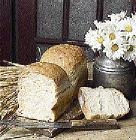Fibre vs whole grains
Published: Wednesday | November 4, 2009

There is some confusion concerning whole grains and fibre. Are they the same? Do you need both whole grains and fibre? In a word, yes. The dietary guidelines for Americans recommend at least three servings of whole-grain foods daily (48 grams of whole grain). Including enough whole-grain foods and fibre as part of a healthy diet may help protect heart health, reduce diabetes risk and manage weight. Increasing whole grain consumption also may help reduce the risk for stomach and colon cancers.
But a serving of whole grain is not always a source of fibre. Whole grain can come from any type of grain: wheat, oats, corn, rice, barley, etc. Depending on the proportions of bran - germ and endosperm naturally occurring in the grain kernel - the fibre content will vary. Whole-grain foods also contain moisture and other ingredients that affect fibre levels. For example, bread is approximately 40 per cent moisture, so a 50-gram serving of 100 per cent whole-wheat bread will provide three to four grams of fibre.
Bran cereals
Many whole-grain foods are not high sources of fibre, yet they still provide important benefits of whole grain. Grain foods that provide a source of fibre may not contain whole grain. Many high-fibre foods, such as bran cereals, do not provide whole grain. In fact, it is rare to find a whole-grain food with more than four grams of fibre, unless an isolated fibre, such as bran, has been added. Fibre is not a good indicator of whole grain; the fibre content of different whole-grain sources varies, and each grain category (e.g., cereal, bread) has a different standard serving size.
Kara Berrini, programme manager of the Whole Grain Council, speaking recently at the American Dietetic Association's annual meeting in Denver, says both whole grains and fibre are needed in a healthy diet. Look for both on labels.
"Fibre is just one of the markers people can use to identify whole grains," said Berrini. "Fibre can come from other sources besides whole grains. And even whole-grain foods that aren't high in fibre provide important nutrients to a healthy diet."
The bottom line: include both whole grains and fibre in a healthy diet.
Alcohol and breast cancer risk
Q. I know too much alcohol harms the liver, but how could it raise my breast cancer risk?
A. There are several potential explanations for the link between alcohol and breast cancer risk. Alcohol affects the liver. Whether excessive alcohol harms the liver itself or simply overloads the liver's ability to get rid of toxins, the net result is that fewer carcinogens are removed from the blood and that increases cancer risk. In addition, alcohol is itself considered a co-carcinogen. It stimulates other carcinogenic substances that can damage DNA, which is the first step in cancer.
Some studies also suggest that alcohol, along with a substance produced as the body metabolises alcohol, can inhibit the body's normal ability to repair damaged DNA. Other studies show that alcohol may change levels of oestrogen and other hormones, which would influence hormone-related cancers like breast cancer.
— American Institute for Cancer Research
Charlyn Fargo is a registered dietitian at www.creators.com.


